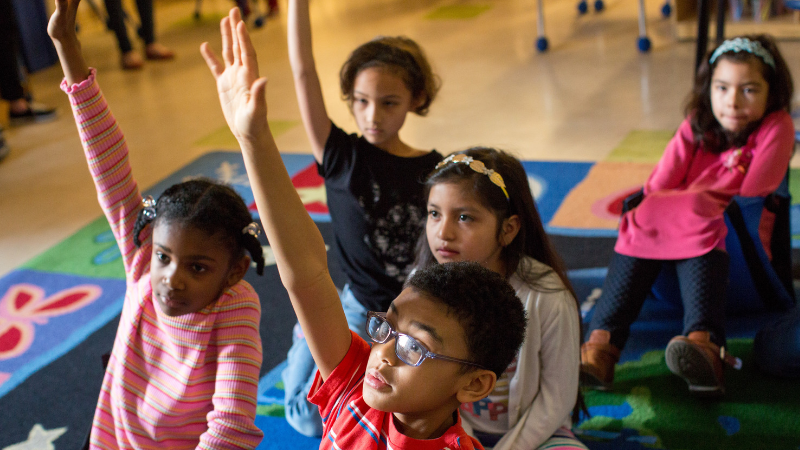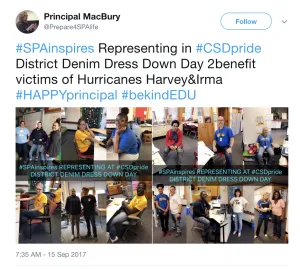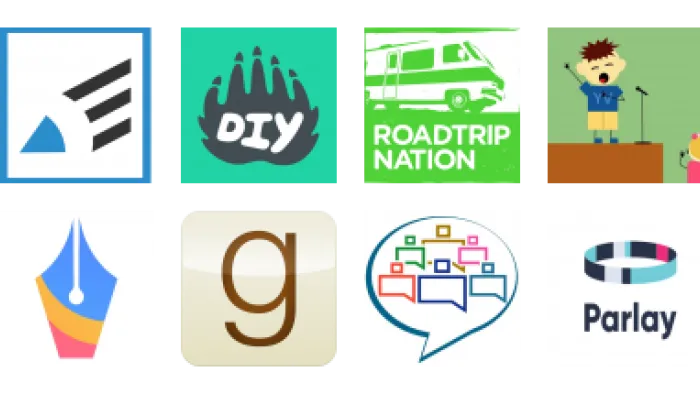Step up your digital citizenship program with opportunities for real-world global impact.

"Teacher Voices": This article is part of a series of from-the-classroom perspectives.
Let’s face it: There are few tools more powerful or with more reach than digital technology. According to a 2016 Pew Research Center survey, nearly eight in 10 Americans have at least a desktop computer, and 77 percent of Americans across all demographics own a smartphone. Digital access for our students is everywhere, all the time, affecting how our students live, socialize, work, play, contribute, and learn.
As we reflect on our role as educators in this time of increasing digital connectedness, consider this question: How do we best prepare our students to be good digital citizens while incorporating 21st-century skills in their journey? One way to approach this is by helping students become responsible global digital citizens.
Why Make Dig Cit Global?
What's the difference between being a good digital citizen and a good global digital citizen?
Our first and primary objective when teaching digital citizenship is helping students learn to appreciate, respect, and cultivate a positive digital footprint. This includes knowing how to effectively access and leverage digital tools to search, evaluate, communicate, and reflect on all aspects of the growing digital realm.
Global digital citizenship applies the concept that 21st-century technology and digital media have eliminated the boundaries between citizens of the world by enabling communication, collaboration, dialogue, and debate across all levels of society. Global digital citizens think about how they can use technology and digital media to be of service and change the world.
In a recent report from the National Association of Secondary School Principals, “Creating Conditions for Success: Supporting Students Making a World of Difference,” principals defined global citizenship through desired outcomes: "Students should not only see the impact in their communities, but should experience personal development ... A focus on outcomes is not about how many people were helped, but also includes an appreciation of the critical thinking skills informed and investigative approaches necessary for learners and future leaders."
Global digital citizens think about how they can use technology and digital media to be of service and change the world.
Students in our schools have the power to communicate, collaborate, take action, and have an impact on a global scale in large part because of the power of technology. Through their digital citizenship lessons, they understand how to be respectful in all media forms and evaluate the credibility of sites, organizations, and causes. Helping them identify opportunities where they can impact their world and encouraging their service on personal, local, regional, national, and international levels is how we cultivate a sense of social responsibility and support global digital citizenship.
Many of you are already thinking about digital citizenship in the global sense. If you aren't, I believe it's a natural next step to your existing digital citizenship program. When it makes sense and there's alignment with your class- or school-wide goals, go for it. And when you're "getting global," call it out! The more we share ideas and recognize the ways kids are using technology to make positive social change, the easier it will be for all of us to elevate the importance of global digital citizenship.
How Our Students Took Action

- A Twitter campaign for our community to pledge funds.
- Connecting with relatives in Puerto Rico via Google Chat and reporting back to the school.
- Collecting clothing and other nonperishables for donation.
- A "dress-down day" to bring in additional donations from students and staff.
Our students were connected personally, globally, and digitally. The greatest positive benefits of cultivating our students' awareness of their larger responsibility has been the ripple effect in identifying new ways to take action as a school community -- a global digital school community.
3 Ways Your Students Can "Get Global"
You may be wondering how to step up your digital citizenship program to help kids become global digital citizens. You're in luck! I have a few ideas for you to consider as you think through your lessons:
1. Have students create, record, and report on their digital footprint. This project can include Googling themselves as they begin to explore the implications of their own digital footprint. Extend this activity into examining the implications of their digital imprint and the decisions on college and career goals, as well as brainstorming ways to make a positive digital footprint. Take it a step further by having students investigate how you can use social media for social change. Read up on teen social influencers and examine how they use social media to drive their cause or campaign. Have your class adopt a global project (e.g., Global Poverty Project), and create tweets, sign petitions, or send emails to advance the cause. Check out the resources and information available at Global Citizen, including prewritten Twitter messages and email templates for many causes.
2. Connect your class via social media and allow them to chat, post, and interface in a safe learning environment. Model responsible virtual social behaviors -- blogging, vloging, Skyping, texting, and emailing. Set classroom norms for internet engagement, and give students tools and strategies for how to respond when they encounter inappropriate virtual communication. Then connect internationally with another classroom. Students can collaborate with their counterparts to answer essential questions or dive deep into a global issue or project. (Check out Skype Collaborations to connect with educators around the globe, listen to guest speakers, and take virtual field trips, courses, and more with your students.)
3. Encourage students to use their digital space to promote a school project or activity. Develop community branding and share the project with your school community, for example, through hashtags or artwork. Use the project as an opportunity to model how to search for unique verbiage or Creative Commons-licensed images. A couple of possible projects could be:
- Consider the financial implications of a project like recycling on a national and global scale, and create opportunities for students to take action. Look at 4thWorldMovement.org for more ideas.
- Explore the safety and privacy of information. Visit NEA.org for possible student resources.
We have the greatest power -- far greater than even the vast power of all that technology can give us. As educators, coaches, and models, we have the power to build a culture that encourages and challenges students to grow to be the best people they can be, hopefully with an appreciation for global digital citizenship. Let’s unite to harness all that technology can provide for the power of "getting global."
Photos courtesy of Allison Shelley/The Verbatim Agency for American Education: Images of Teachers and Students in Action.








